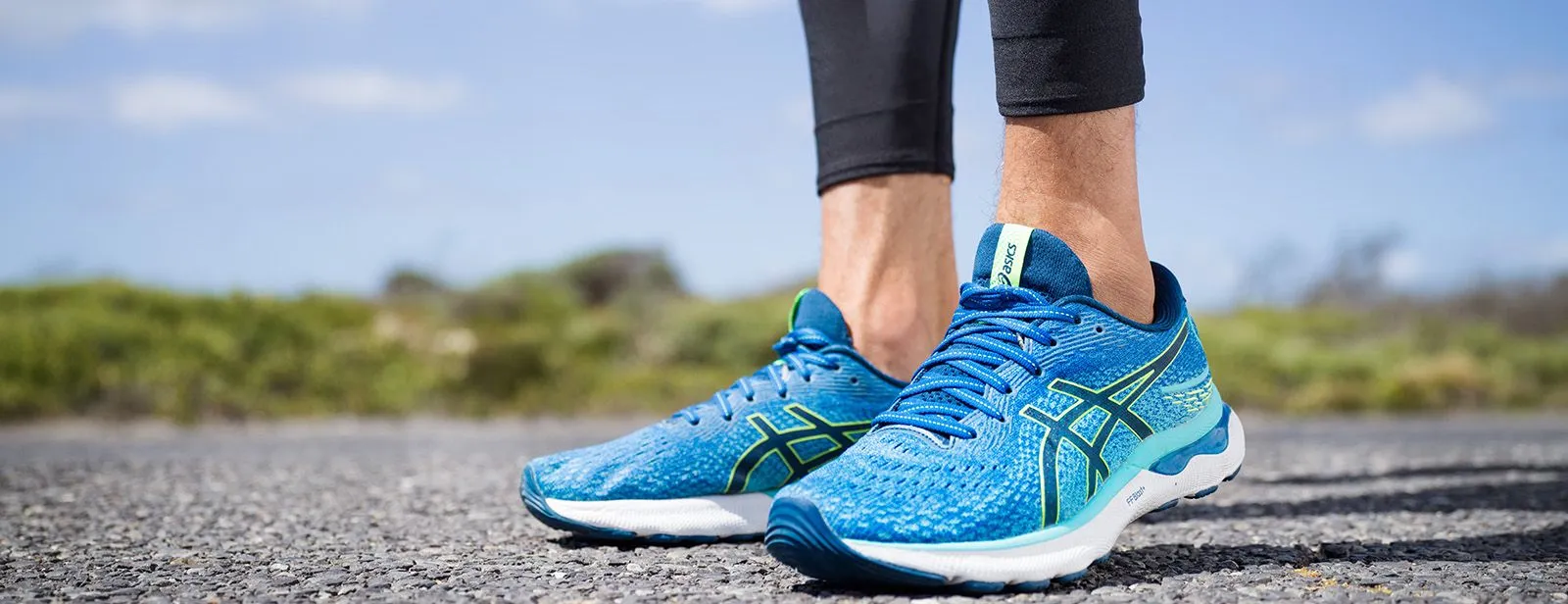
What are shin splints?
July 9, 2021
What are shin splints and why do they happen? Find out about the common causes of shin splints and simple home remedies you can use today
Need help finding your perfect shoe?
Let's find the shoes made for you in four easy steps.
Do you have a dull ache in your shins when you’re running that sometimes turns into a sharp pain? Then you might be suffering from shin splints. Shin splints are the bane of runners the world over, but what are they, what are their symptoms, and most importantly, how can you avoid them?
What are shin splints?
Shin splints is the term used to describe the pain in the front lower leg that people often get when exercising. It usually begins as a dull ache before progressing to a sharp pain, which may cause you to stop running.
Shin splints is not actually a medical term. Instead, it refers to the pain people get in their lower legs that’s brought on by exercise. There’s still no definitive scientific consensus on the condition and no one knows exactly what causes shin splints. Nonetheless, it is possible to reduce the risk of shin splints occuring.
What are the main shin splint symptoms?
Shin splint symptoms are usually experienced during exercise, especially when running, jogging or walking quickly. Common symptoms include:
- Pain in the shins soon after you start exercising
- A gradual fading of the pain when you stop
- A pain that begins as a dull ache and gradually becomes sharper
- It’s often the case that both shins hurt simultaneously
- You tend to feel the pain across a large part of the shins – it’s not just acute and in one spot
- Possible swelling
Are shin splints a major problem?
Absolutely. Shin splints can be a very annoying and persistent problem and it often has underlying causes that can be difficult to identify. With rest and recovery, shin splints can disappear. However, it may be caused by something more serious such as a stress fracture. If the pain persists after taking precautionary measures, it’s well worth booking an appointment to see your GP or a physio.
What causes shin splints?
Although it’s very difficult to put a finger on exactly what causes shin splints, there are several behaviours that can bring on this condition.
- A sudden increase in exercise - You might have recently started a new training plan that involves a lot more running. If your body isn’t used to the intensity of exercise, you may develop shin splints. Try and build up gradually rather than making big changes to your regime overnight.
- Running on hard surfaces - While pavements make a great, smooth surface to run on, they’re also tough on your feet and muscles. Try running on grass, in wooded areas or on other softer surfaces whenever possible.
- Overpronation - Overpronation occurs when your feet roll inwards too far when you’re running. This can cause additional stress to your legs. Wearing running shoes that provide additional support for overpronators can help to reduce the risks.
- Running in worn or inappropriate shoes - Running shoes are designed to counter the stresses and strains that are put on your feet and legs. If you’re wearing general shoes that aren’t specifically designed for running, then you could be at a higher risk of developing shin splints. The same goes for other sports like tennis.
- Joint and muscle problems and previous injuries - Shin splints can also be caused by problems such as tight calf muscles, weak ankles or plantar fascia issues. Previous injuries can also cause your body to overcompensate in the way it redistributes stress and that can lead to shin splints.
Techniques to reduce the symptoms of shin splints
If you’re suffering from shin splints that will not go away, it’s always a smart move to visit your GP or a physio. However, in the meantime, there are some techniques that can be successful in treating milder cases:
- Stop doing the activity that causes your shin splints - Hold off from the activity that’s causing your shin splints for at least one month or even longer if you’ve been running through the pain and have noticed it getting worse. Rest your legs and take up a different low/no-impact sport such as cycling, swimming or using a crosstrainer.
- Gradually increase the intensity - If you’ve already taken a few weeks off from running, tennis or another activity to rest your shin splints, then try to avoid the temptation to immediately return to maximum intensity. Instead, restart slowly by doing the activity for shorter amounts of time before gradually increasing your workload.
- Use ice packs - If you’re in pain, wrap an ice pack or a bag of frozen peas in a towel and hold it against the shin for at least 15 to 20 minutes a few times a day.
- Take pain relief medication - Over-the-counter painkillers like ibuprofen and paracetamol can help to reduce shin splint discomfort.
Not a serious medical condition
Shin splints are one of those irritating and persistent injuries that affect most runners at some point - not to mention those involved in other sports, such as tennis, handball and volleyball. The good news is that shin splints are not a serious medical condition and they can go as quickly as they come. However, if they are persistent, then you should visit your doctor to rule out a stress fracture.
If you need a little more guidance, then read our guide to another common running injury, plantar fasciitis , and learn how to protect your knees when running .


